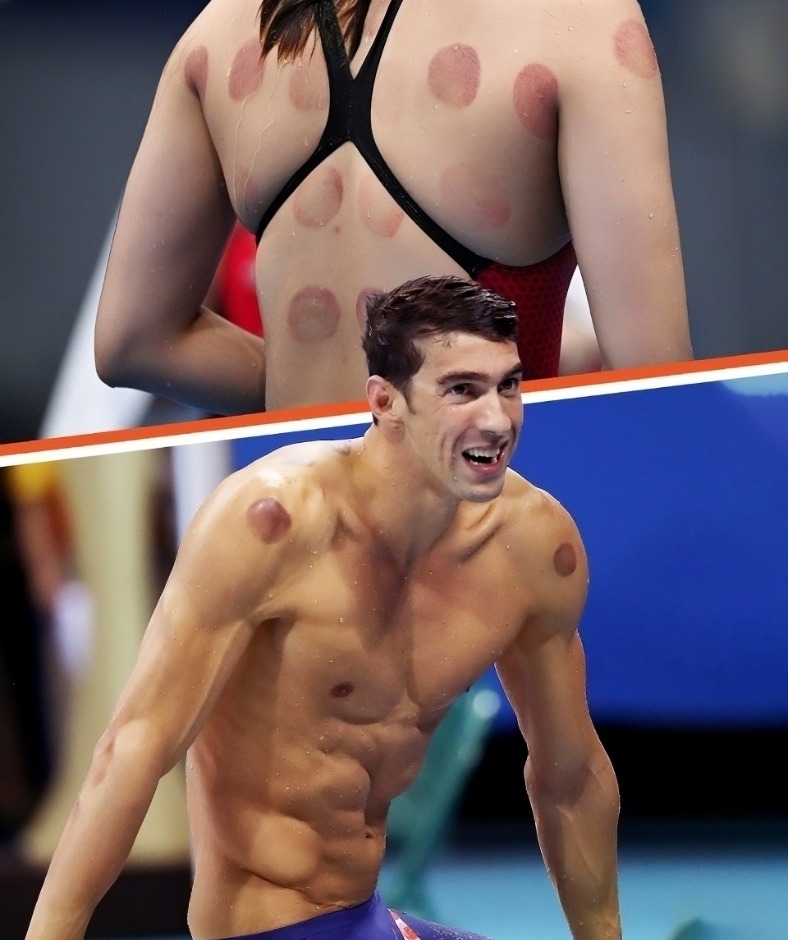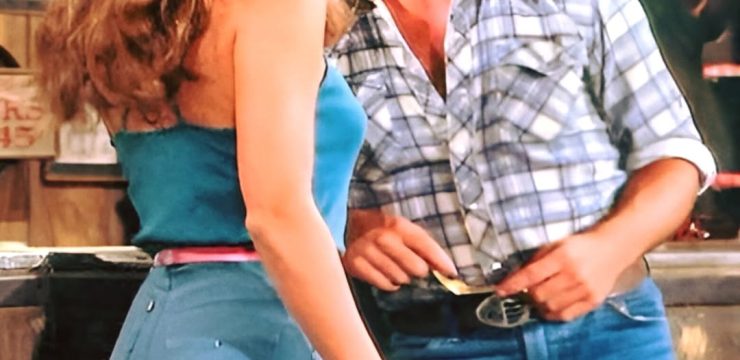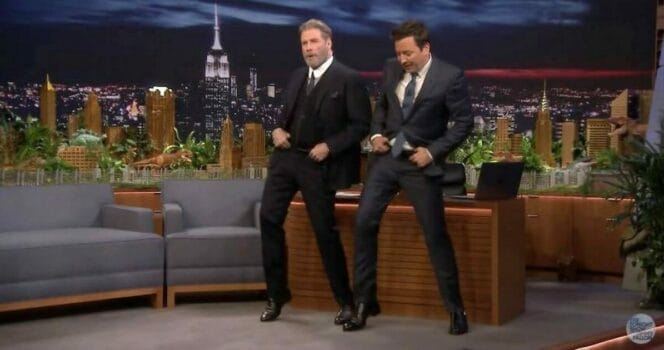The 2024 Paris Olympics kicked off with a dazzling opening ceremony on the Seine River, welcoming over 6,800 athletes from around the world. As the games progress, many viewers have noticed unusual dark red, circular marks on the bodies of athletes, particularly on swimmers and gymnasts. This has left spectators wondering: “What are those spots?” These marks are the result of a traditional healing technique called cupping therapy.

What Is Cupping Therapy?
Cupping therapy is an ancient practice originating from traditional Chinese medicine that dates back over 2,000 years. It involves placing special cups on the skin to create suction. The process draws the skin and underlying muscles into the cups, resulting in circular marks that range from light pink to deep red, depending on the session’s intensity and duration. While the visual marks may seem unusual, they are temporary.
Cupping therapy is more than just a curious sight; it’s believed to provide several benefits, such as muscle relaxation, pain relief, and enhanced blood circulation. Many athletes use it to boost recovery times and improve overall performance, making it a popular choice among Olympians and other elite athletes.
Why Do Athletes Use Cupping?
So, why have famous athletes like Michael Phelps and Serena Williams embraced cupping therapy? The answer lies in the supposed benefits, which are particularly helpful for those who push their bodies to the limit:
1. Reducing Muscle Soreness and Stiffness
Athletes often experience muscle soreness after intense training or competition. Cupping is believed to alleviate this soreness by increasing blood flow to the targeted areas. Improved circulation helps to flush out lactic acid and other metabolic waste, reducing muscle stiffness.
2. Speeding Up Recovery
In competitive sports like the Olympics, fast recovery is crucial. Cupping is thought to accelerate the healing process by boosting blood flow and bringing more nutrients to the muscles. This is especially valuable for athletes who need to be at peak performance across multiple events over several days.
3. Decreasing Inflammation
Inflammation can be a major challenge for athletes, leading to discomfort and reduced performance. Cupping therapy is believed to reduce inflammation by promoting blood flow and stimulating the body’s natural healing process, allowing athletes to get back into training and competition more quickly.
4. Providing Relaxation and Pain Relief
Much like a deep tissue massage, cupping is known for its relaxing effects. Athletes often feel looser and more relaxed after a session, which can improve performance. Additionally, the therapy may trigger the release of endorphins, the body’s natural painkillers, helping athletes manage pain during training and competition.
Cupping’s Origins and Global Popularity
While cupping has recently gained attention in Western countries, it has been a cornerstone of traditional Chinese medicine for centuries. Initially used to treat various ailments, from muscle pain to respiratory issues, cupping has evolved over the years. Today, the technique is practiced worldwide, with variations tailored to different cultures. In traditional Chinese medicine, it’s often combined with acupuncture for a more holistic approach.
Notable Athletes and Celebrities Who Use Cupping
Cupping made headlines during the 2016 Rio Olympics when swimmer Michael Phelps sported the characteristic marks on his shoulders. As one of the most decorated Olympians in history, Phelps credited cupping with aiding his recovery and keeping him at his best. Since then, many other athletes and celebrities have tried cupping:
- Michael Phelps: He popularized cupping during the Rio Olympics, showing its benefits for muscle recovery.
- Serena Williams: The tennis legend has praised cupping for its role in easing muscle soreness, allowing her to maintain top performance.
- Gwyneth Paltrow: Even outside the athletic world, cupping has found a fan base in Hollywood. Actress Gwyneth Paltrow was spotted with cupping marks on the red carpet, bringing the therapy to mainstream attention. Known for her interest in holistic wellness, Paltrow’s endorsement helped popularize cupping beyond sports.
How Cupping Works
Cupping’s mechanism is straightforward: suction created by the cups lifts the skin and underlying tissue, increasing blood flow. Here’s how a typical session unfolds:
- Preparation: Cups made of glass, silicone, or bamboo are placed on the skin.
- Suction: Heat or an air pump creates suction, drawing the skin into the cup and expanding blood vessels.
- Treatment: The cups remain on the skin for 5-20 minutes, depending on the desired effect.
- Aftercare: The cups are removed, leaving circular marks that fade over a few days. The benefits, however, may last longer.
Are There Risks to Cupping?
While generally safe, cupping has some potential side effects, including:
- Skin Irritation: The suction can cause mild discomfort or itching, which is usually temporary.
- Bruising: The red or purple marks are essentially bruises that can last for a few days.
- Mild Pain: Some people may experience minor discomfort during or after the session.
These side effects are typically minor, but consulting a qualified practitioner is recommended, especially for those with sensitive skin or underlying health conditions.
The Future of Cupping in Sports
As more athletes and celebrities turn to cupping for its recovery benefits, it’s likely that the therapy will continue to grow in popularity. With advancements in sports science, cupping may become an even more common tool in athletes’ recovery routines. Its ability to provide natural pain relief and improved recovery times is invaluable in competitive sports, where even a small edge can make a big difference.
Conclusion: Ancient Wisdom Meets Modern Athletics
The dark red circles seen on Olympians may seem odd, but they represent a blend of ancient healing techniques and modern athletic performance. Cupping offers athletes a natural way to speed up recovery, relieve muscle soreness, and enhance performance. Whether it’s Michael Phelps in the pool or Serena Williams on the court, cupping has proven to be a valuable tool in achieving athletic excellence. As we watch the Paris 2024 Olympics unfold, these red circles remind us of the timeless pursuit of peak performance, resilience, and tradition.





